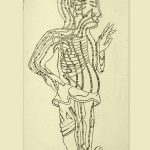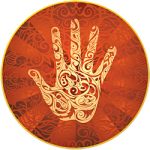Neuroscience: Where Western Medicine and Chinese Medicine Can Come Together
By Bruce H. Robinson, MD, FACS, MSOM (Hon)
The recent advances in neuroscience are truly incredible. With this expansion of scientific knowledge, I would like to see even more research into the neuroscientific basic of acupuncture and Chinese Medicine. Much brilliant investigation has already been undertaken, and I envision an eventual coming together of Western and Chinese medicine in this field.
The nervous system is an incredibly complex and truly vast network of neural tissue with connections from one neuron to another and also to and from all other organs of the body. It is estimated that a human brain has more than 100 billion nerve cells and each nerve cell on average connects to 10,000 other nerve cells – in some cases there are as many as 100,000 connections from one neuron to other neurons.
There are thus at least 1000 trillion synapses (1,000,000,000,000,000 synapses) in one human nervous system: 1 quadrillion. This is 100 million synapses per cubic mm of brain (smaller than a pinhead of brain tissue). Most of these connections simply enable the brain’s neurons to talk to each other, as 99% of the neurons in the cortex connect only to one another. The other 1% control the rest of the body. All this working together creates waves of energy we don’t really understand.
I believe all of us must certainly feel a sense of spiritual awe when we confront the incredible complexity of the nervous system. Neurons are indeed the most amazing cells in the body. Each is a mini-computer. What goes on in each human neuron at all times probably surpasses the complexity of everything that is going on in the state of Florida, where I live, including all the factories, schools, homes, hotels and businesses. For example, there are thousands of protein factories (called ribosomes) in the rough endoplasmic reticulum of each cell, connected to other parts of the cell by thousands of microtubules that serve as highways for the transport of nutrients and wastes, all coordinated by a Golgi apparatus which serves as a master distribution center. The neurons are the most complex of all cells in the body, and they live the longest. Most neurons are as old as we are (older, actually, as they were in place before we were born). Proteins or lipids may be replaced but the neurons do not turn over. New neurons are created in some parts of the brain, mostly the hippocampus and entorrhinal nucleus (learning and recent memory centers). Sadly, these areas are also the first to degenerate in old age.
 Neurophysiologists now understand to an astonishingly precise degree how electrochemical impulses connect one part of the nervous system to another, sense environmental information, cause muscles to contract and organs to function, in a coordinated manner. Most of what goes on is subconscious, even during the day when we’re awake. We’d all go crazy if we had to think consciously about even a tiny fraction of what goes on in the subconscious parts of the mind.
Neurophysiologists now understand to an astonishingly precise degree how electrochemical impulses connect one part of the nervous system to another, sense environmental information, cause muscles to contract and organs to function, in a coordinated manner. Most of what goes on is subconscious, even during the day when we’re awake. We’d all go crazy if we had to think consciously about even a tiny fraction of what goes on in the subconscious parts of the mind.
However the brain is more like a marketplace than a hierarchical computer. Different parts dialogue (and sometimes disagree) with each other (with reciprocal feedback) and they reach a consensus subconsciously over our previous and new constructs of reality. This, then, becomes conscious. It all happens in small fractions of a second. We actually have two brains! The right brain and the left brain. They don’t think the same and they don’t always agree, but they also reach a consensus. They are connected together with a large structure in the middle of the brain called the corpus callosum. Interesting studies have been carried out with patients who have a damaged or inoperative corpus callosum from head trauma or a brain tumor. In some of these studies, the right hand will go to pick up a pencil or some other object and the left hand will prevent this by grabbing the right hand away!
Most neurons have multiple dendrites (incoming information) and one long axon (outgoing information). Again, many neurons have ten thousand to a hundred thousand connections to other neurons. Each releases a neurotransmitter such as acetylcholine to complete this connection to the other neuron (or to a muscle cell, an organ or a gland cell). Special added neurotransmitters such as glutamate facilitate plasticity… the ability of neurons to learn. Other neurotransmitters contain amine groups that facilitate our feelings, centered in the limbic system. Neurons in the gray matter store memory and process information they receive before responding with their own output, always with their own one axon. Some neuron axons are 1mm long, and some are over 1 meter long. In the sciatic nerve, for example, the axons are 200,000 times the length of the cell. This is like a person having an arm 100 miles long!
The gray matter on top contains the thinking neurons. It is only 2mm to 4mm thick (averaging 1/8th of an inch). There are six layers of neurons in this thin layer of grey matter (there are masses of neurons in each layer), with the most primitive neurons on the bottom and the most recent to evolve on top). The neurons in the gray matter are mostly interconnected in vertical columns (from primitive to most recently evolved). The white matter is the myelin-covered connections to the rest of the nervous system. The ridges of the brain are called the gyri and the in-folding areas are call the sulci. This gives the cortex a surface area of 350 square inches!
The brain weighs about three pounds in adults, which is only about 2% of body weight. Yet the brain receives more than 20% of all the blood put out by the heart (the cardiac output), and demands over 20% of the body’s oxygen and 25% of its glucose. The brain is thus the most energy-consuming tissue in the entire body, running mostly on the oxidative metabolism of glucose. Brain metabolism is steady and continuous. The brain never rests. Its constant and tireless behavior is related to its functions:
- Organizing incoming sensory information, from within and without the body.
- Correlating all this with stored, learned experiences.
- Constructing our world in our minds, so it doesn’t surprise us or throw us off the next time.
For example, there are ten times more neurons going from the cerebral cortex to the thalamus than there are going back from the thalamus to the cortex. The job of the thalamus is to report the changes from our previous mental construction of the environment. This is how we each construct our own unique world in our mind, and each person’s world is different from everyone else’s world. Your red may be different than my red, but we can’t know this. In fact, 10% of women have four primary colors instead of the three the rest of us have. They see colors we don’t. Their extra primary color is in the magenta range, causing different color combinations than the rest of us can experience.
The brain also controls internal processes of the body while person is asleep or awake. Muscle contraction and movement decisions when we are active are made by the thalamus, basal ganglia, and the mid-brain, after we learn them, such as riding a bike, swimming, or dancing a waltz. All the little movements and the required precise balancing become unconscious, although they are conscious when we’re learning them!
The brain also ponders all meaning, options and possible consequences of various actions. Deciding and initiating outgoing nerve impulses and determining overall behavior.
—
For Chinese Medicine in Louisville, KY, you can read about Jeffrey Russell of Abacus Chinese Medicine here. You can also reach him at 502 299-8900.

